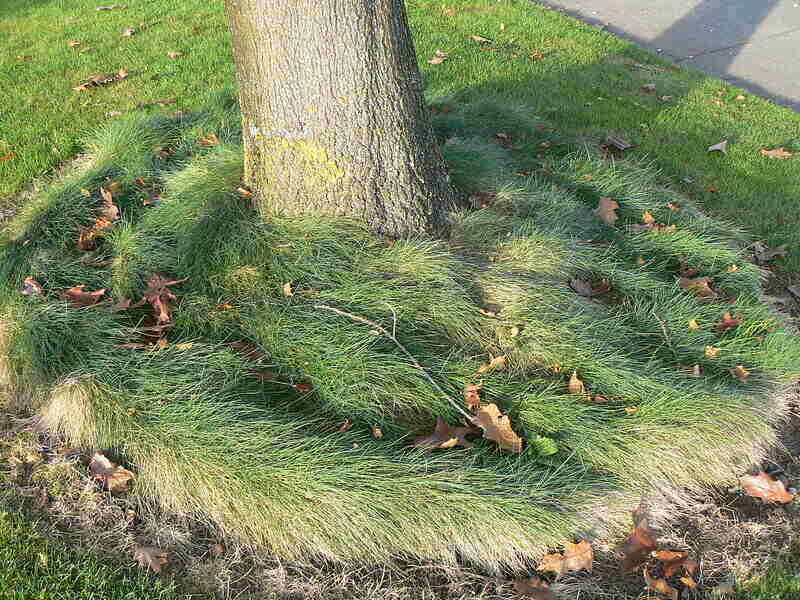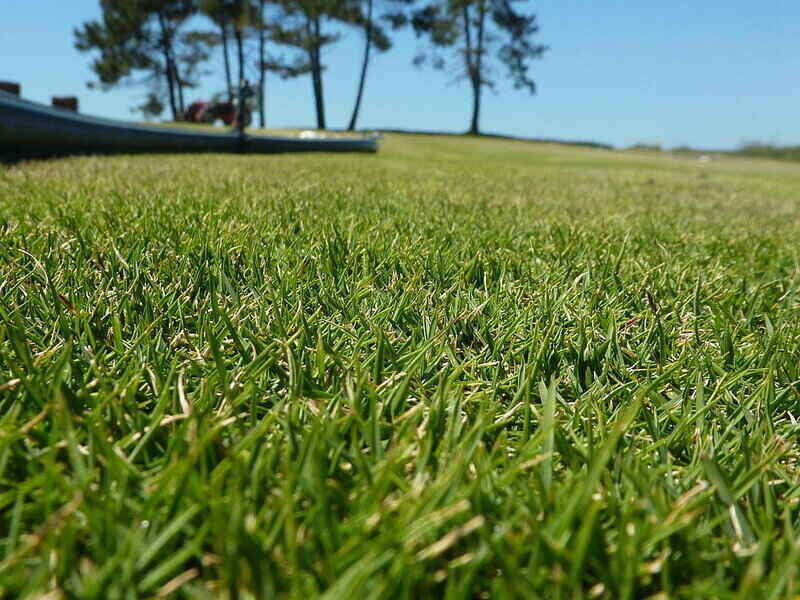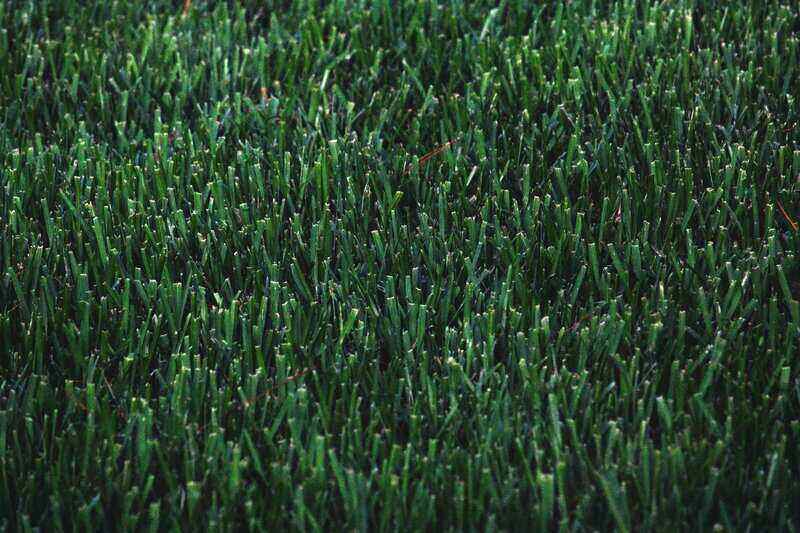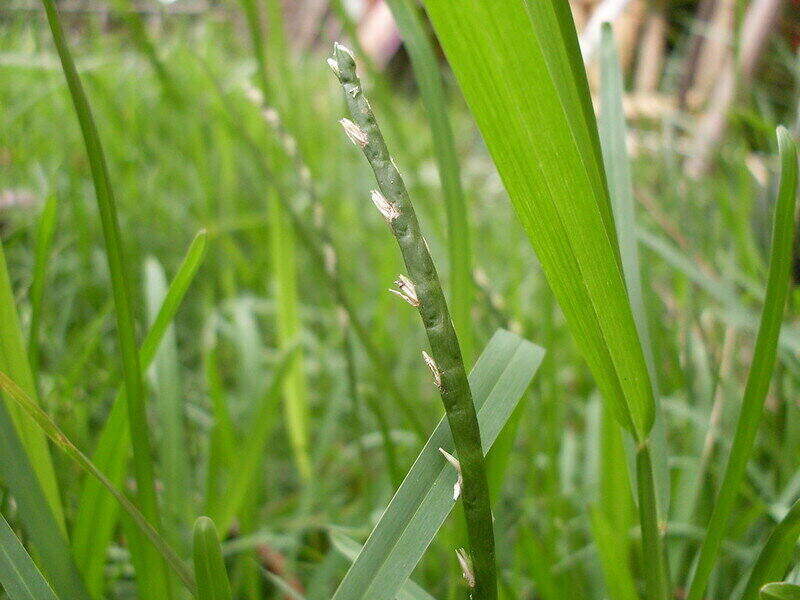What is No-Mow Grass
BY JANAE SOULES | AUGUST 1ST, 2022 | BLOGYou’re frustrated with fighting the lawn mower and sweating bullets in the hot sun. Maybe it’s time to plant a no-mow grass.
Several no-mow grasses and low-maintenance grass types only need mowing once or twice a year. Some no-mow grasses are also drought-resistant, so you won’t have to water them either. We’ll start by touting the benefits of a no-mow lawn, then walk you through the best no-mow grass alternatives for your lawn.
Table of contents:
No-Mow Grass Defined
The term “no-mow grass” may actually be a misnomer. A low-maintenance lawn can also include low-mow grass varieties.
Sometimes a grass blend will green up your yard without forcing you to spend your late spring and summer months pushing around a lawn mower. Some have the added bonus of needing little watering.
Which of these grass types you choose will depend on your climate, soil type, and preferences.
Hard and Fine Fescue Grass Blend

For colder climates or in transition zones, fine fescue is the most popular cool-season grass for a no-mow or low-mow lawn. A blend of fine and hard fescue, this grass type needs little maintenance and makes it easy to control weed growth.
Fescue blends require little fertilizer or herbicides. The best part? With fine fescue, you’ll only have to mow your lawn once or twice a year. Fescues tend to perform better when you apply a lawn seed mix, allowing one to thrive if the other doesn’t.
Fescue Varieties
- Hard fescue and sheep fescue: Bunch-forming types of fine fescue. They are heat and drought-tolerant.
- Chewings fescue: Shade and drought-tolerant. It’s an aggressive bunch forming fescue, so it will crowd out weeds – and sometimes flowers. Chewings fescue prefers sandy and acidic soils.
- Creeping red fescue: This grass grows well in shady or sunny areas. It’s drought and foot traffic tolerant. Fall is the best time to seed creeping red fescue.
Buffalograss
Native to the Great Plains, from Montana to Mexico, Buffalograss is a low-growing, warm-season grass. It has individual leaf blades reaching 10 to 12 inches in length. However, the leaf blades fall over, giving it a short appearance.
- Commonly found in heavy clay soils: Prefers environments with moderate to low rainfall (15 to 30 inches a year).
- Prefers sun:-Does not do well in shade or areas with heavy foot traffic.
- Has the most flexibility with mowing: Can be mowed anywhere from weekly to once a year.
- Wide range for seeding time: Spring is best for seeding, but in warmer climates, you can plant it as late as August- as long as the weather remains warm enough for the root system to develop.
- Needs occasional weeding and fertilizing: It is low-maintenance but requires some care.
Zoysia Tenuifolia

Zoysia tenuifolia only grows about 4 inches tall, making it a great no-mow option in hot and humid Southern states. It’s often called “petting grass” because of its fine blades and deep green color that form soft mounds.
- Slow-growing – It takes a season or two for full coverage.
- Drought-resistant – Once established, Zoysia tenuifolia needs little watering.
- Tolerates foot traffic – Good for kids and pets and only needs an annual spring fertilizing.
Ground Covers as a Lawn Alternative
Ground covers are extremely versatile and grow in any climate, and each is unique in its growth pattern and color. Once you have a landscape design in mind, you’ll be better able to decide which ground cover is best for you. Most ground covers do best when planted in the spring.
Ground covers are low-maintenance, but preparing the ground and planting them requires some work. You must eliminate all weeds before planting. Once the ground cover is established, add one to two inches of mulch to keep the soil moist and deter weeds.
Some popular ground covers are creeping Jenny, sedum, Asiatic Jasmine, creeping thyme, and moss.
- Creeping Jenny: Prefers full sun, but can become greener with partial shade. It’s a bright, vining plant that prefers wet to medium soil.
- Sedum: A succulent that comes in several varieties. They’re drought-resistant and easy to grow. .
- Asiatic Jasmine: A vining evergreen that grows about 6 to 12 inches, with white, yellow, or pink flowers in the spring. You’ll often see Asiatic Jasmine on sloping landscapes. .
- Creeping thyme: Works with a wide variety of soil types. It adapts to sunny and shady conditions and is deer resistant and able to handle heavy foot traffic.
. - Moss – This no mow ground cover is excellent for a shady yard. It grows in any type of soil and rarely needs weeding, watering, or fertilizing. You can mix several varieties for a green lawn throughout the year.
Artificial Turf

Schools, stadiums, and government agencies use artificial turf for a pristine look without the maintenance of a grass lawn. Artificial turf is the true definition of no-mow grass. It will never need mowing or fertilizing and can be installed anywhere. It will only need water if you’re cleaning it off or attempting to cool it down.
Artificial turf can be hot to the touch in the summer months. There has been a growing health concern about it due to granulated crumb rubber used as filler. The crumbs can be inhaled and are sometimes toxic.
No Mow May
If you need an excuse to put away the mower, “No Mow May” provides it. It’s a month-long holiday to allow grass to grow, creating an inviting habitat for bees and other early-season pollinators. A conservationist group in the U.K. came up with the idea, and it’s growing faster than our lawns in the U.S.
The biggest problem with this eco-friendly initiative is convincing cities and HOAs to relax their regulations for a month. Plant a no-mow grass, and the regulations and long grass fees are one less thing you’ll have to worry about.
Frequently Asked Questions
1. Do I have to tear out my existing lawn and replace it to have a no-mow lawn?
Yes. You’ll want to tear out your existing lawn before replacing it. Doing that will ensure you’re able to eliminate weeds for a fresh start.
2. When is the best time of year to replace my lawn with a no-mow variety?
Spring is the best time of year to plant most grass types, especially no-mow varieties. You won’t have to water as much, and planting in the spring allows roots to develop and grow deep into the soil before the first fall frost arrives.
3. Will a no-mow lawn be as attractive as a high-maintenance lawn?
A no-mow lawn is a different kind of attractive. It offers variety: You can have your traditional green look with a fescue blend, buffalo grass, Zoysia tenuifolia, or succulents or flowers with a ground cover.
4. Will no-mow grass types grow well in the shade?
Chewings fescue, creeping red fescue, moss, and creeping thyme all grow well in the shade. Artificial turf will stay cooler in a shady area.
5. Are no-mow grasses good for sports fields?
Artificial turf is a good option for sports fields. However, some athletes prefer traditional grass because injuries are less severe, and synthetic turf temperatures can be much hotter. The commercial mix of no-mow grass tolerates a good amount of foot traffic.
Overseeding your lawn with no-mow grass seeds is an easy job for a DIY-er, but laying new sod may take a lot more time and expertise. We can help you to find a lawn care or landscaping pro near you.
Main photo credit: Pxhere
